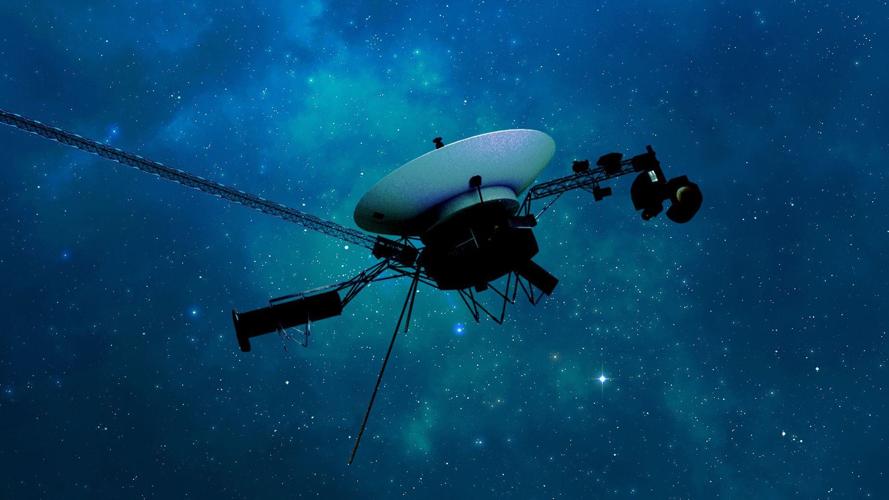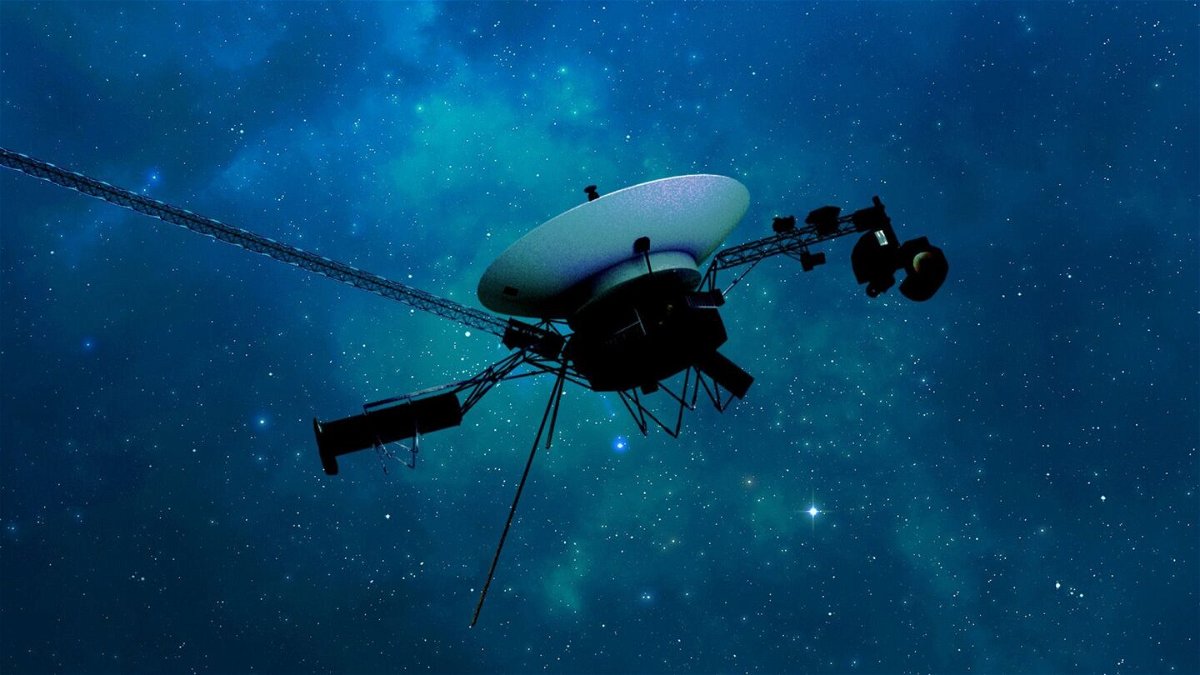Breaking: Voyager 1 Sends Data Back to Earth After 5 Months!
- Update Time : Tuesday, April 23, 2024

Voyager 1 recently sent data back to Earth, marking its first transmission in 5 months. The spacecraft’s resumption of communication offers key insights into the outer edges of our solar system.
Voyager 1, launched by NASA in 1977, continues to provide valuable data as it ventures into interstellar space, beyond the influence of our sun. The recent data transmission provides a unique opportunity to deepen our understanding of the space beyond our solar system.
Since its launch, Voyager 1 has offered unprecedented insights into the cosmic environment, and its latest data transmission is a significant milestone in the ongoing exploration of the universe. This development reinforces the enduring impact of Voyager 1’s mission and offers new avenues for scientific discovery.
Background Of Voyager 1
Voyager 1, a space probe launched by NASA in 1977, holds the distinction of being the first human-made object to venture into interstellar space. Its primary mission was to conduct flybys of Jupiter and Saturn, providing valuable data and images of both planets and their moons.
Launch And Mission Objectives
Launched on September 5, 1977, Voyager 1’s primary objective was to explore the outer planets of the solar system, namely Jupiter and Saturn, and transmit data back to Earth. Equipped with various scientific instruments, the probe sought to capture detailed images, collect data on the planets’ atmospheres, and investigate their moons and rings, offering insights into their composition and characteristics.
Current Location In Space
Currently, Voyager 1 is located in the interstellar medium, approximately 14 billion miles away from Earth. As it continues its journey, the probe remains functional, transmitting valuable information about the interstellar environment and serving as a testament to human exploration and scientific advancement.
Importance Of Data Transmission
Voyager 1’s data transmission to Earth after 5 months marks a significant milestone in space exploration. The importance of this transmission lies in the valuable insights it offers about interstellar space, enhancing our understanding of the universe. This data aids in advancing scientific knowledge and technological capabilities.
Data transmission plays a crucial role in scientific missions, allowing vital information to be sent back to Earth for analysis and further exploration. The ability to receive data from space probes like Voyager 1 offers invaluable insights into the mysteries of our universe and serves as a reminder of the incredible advancements humanity has achieved. Recently, after a hiatus of five months, Voyager 1 has begun sending data back to Earth, making it a monumental moment for space enthusiasts and researchers alike.
Relevance Of Voyager 1’s Mission
The Voyager 1 mission holds immense relevance in our understanding of the cosmos. Launched by NASA in 1977, Voyager 1 embarked on an unprecedented journey to explore the outer reaches of our solar system and beyond. This space probe quickly exceeded expectations and became the first man-made object to venture into interstellar space, leaving our solar system behind. Voyager 1 continues its mission to this day, providing us with invaluable data that expands our knowledge of deep space.
Scientific Discoveries Made
Voyager 1 has made numerous groundbreaking scientific discoveries throughout its epic journey. One of its most significant achievements was the revelation of unique characteristics within our own solar system. The spacecraft’s data revealed new details about the gas giant planets of Jupiter and Saturn, their moons, and their magnetic fields. Voyager 1’s observations also helped scientists gain a deeper understanding of the complex dynamics of these celestial bodies and contributed to our knowledge of their atmospheric compositions.
Moreover, Voyager 1 provided evidence for the existence of lightning on Jupiter and discovered remarkable features like volcanic activity on Jupiter’s moon Io. These discoveries not only expanded our understanding of our neighboring planets but also shed light on the potential for life beyond Earth. Furthermore, Voyager’s data has contributed to studies of cosmic rays, the heliosphere, and the interstellar medium, increasing our understanding of the universe we inhabit.
Technical Challenges
Voyager 1 faced technical challenges, halting data transmission for 5 months. Now, overcoming obstacles, it relays information to Earth.
Technical Challenges The incredible journey of Voyager 1 continues to astound us as it recently started sending data back to Earth after a gap of 5 long months. However, this remarkable achievement did not come without its fair share of technical challenges. Let’s take a closer look at two key obstacles that had to be overcome in order to establish this crucial communication: Distance and Signal Strength, and Data Processing and Analysis.
Distance And Signal Strength
Voyager 1 is currently over 14 billion miles away from Earth, making it the most distant human-made object in space. Scientists and engineers boosted signal reception for distant Voyager 1-Earth communication using advanced receivers and antennas.
Data Processing And Analysis
Analyzing Voyager 1’s data is complex, requiring advanced computer systems to decode signals for insightful analysis. Scientists meticulously compare current and past data to unravel deep space mysteries, showcasing human perseverance in communicating with a distant spacecraft for cosmic discoveries.
Impact On Space Exploration
The recent news of Voyager 1 sending data back to Earth after a gap of 5 months has sparked excitement among space enthusiasts and scientists. This significant event has several implications for the future of space exploration.
Advancements In Communication Technology
One of the key takeaways from Voyager 1’s recent data transmission is the advancements in communication technology. The fact that the spacecraft was able to send data back to Earth despite being millions of miles away is a testament to the progress we have made in this field. With each successful transmission, we are pushing the boundaries of what is possible in terms of long-distance communication in space.
Future Missions And Data Transmission
The successful data transmission from Voyager 1 also paves the way for future missions and data collection in space. The ability to receive vital information from deep space probes opens up new opportunities for exploration and discovery. Scientists gather vital data from outer space, enhancing our cosmic comprehension.
Moreover, this achievement encourages scientists and space agencies to consider more ambitious missions and plan for long-duration space travel. It offers hope for conquering communication challenges and exploring far reaches of the galaxy.
Public Reaction
Voyager 1 has recently sent data back to Earth after a five-month silence, sparking excitement and curiosity among the public. The renewed connection has piqued interest in the spacecraft’s journey and discoveries beyond our solar system.
Public Reaction: People are eagerly anticipating news from Voyager 1’s recent data transmission after 5 months.
Excitement And Interest
Excitement abounds on social media platforms over Voyager 1’s latest data, sparking a frenzy of curiosity and discussion. Twitter, Facebook, and Reddit are buzzing with user engagement, theories, and trending content related to the spacecraft’s findings. Stay tuned for more updates on Voyager 1’s data and the public’s reactions!

Credit: www.kitv.com
Expert Insights
Voyager 1, after a 5-month silence, begins transmitting crucial data back to Earth, providing fresh insights into deep space exploration. The recent transmission marks an exciting milestone in our ongoing quest to unravel the mysteries of the universe.
Expert Insights Voyager 1’s recent data transmission after a 5-month pause has thrilled NASA and space fans globally, offering insights into its status and deep space path.
Nasa Scientists’ Comments
NASA scientists were amazed by Voyager 1’s data transmission, highlighting its importance for exploration and research.
Interpretation Of Data Received
The Voyager 1 data is analyzed carefully to reveal insights about its interstellar journey, cosmic phenomena, and universe understanding.
Challenges And Future Prospects
Voyager 1’s renewed data transmission after 5 months has sparked curiosity and excitement in the scientific community. However, this reconnection also presents various challenges and future prospects for the ongoing mission.
Maintaining Contact With Voyager 1
Ensuring continuous communication with Voyager 1 is a complex task due to its enormous distance from Earth. The spacecraft currently resides more than 14 billion miles away, requiring delicate and precise maneuvers to establish a reliable connection. The team of engineers and scientists at NASA has to be meticulous in maintaining the spacecraft’s functioning and reception capabilities.
Utilizing Data For Further Research
The data received from Voyager 1’s recent transmission holds immense potential for future space exploration and scientific discovery. Researchers seek new insights from 5 months of data on the outer solar system, guiding future missions.

Credit: krdo.com

Credit: ktvz.com
Frequently Asked Questions
How Long Does It Take Voyager 1 To Send Data Back To Earth?
Voyager 1 takes about 20 hours and 56 minutes to send data back to Earth.
What Mysterious Data Is Voyager 1 Sending Back?
Voyager 1 is sending back mysterious data about interstellar space, magnetic fields, cosmic rays, and solar flares.
Will Voyager 1 Return To Earth?
No, Voyager 1 will not return to Earth. It was launched in 1977 and is now travelling beyond our solar system.
Conclusion
After 5 months, Voyager 1 is finally transmitting data back to Earth, marking an exciting milestone. The spacecraft’s communication return offers insights into our solar system’s outer reaches. This achievement represents a significant step forward in our continuous exploration of the universe.
Stay tuned for more groundbreaking discoveries in the future.


















Leave a Reply